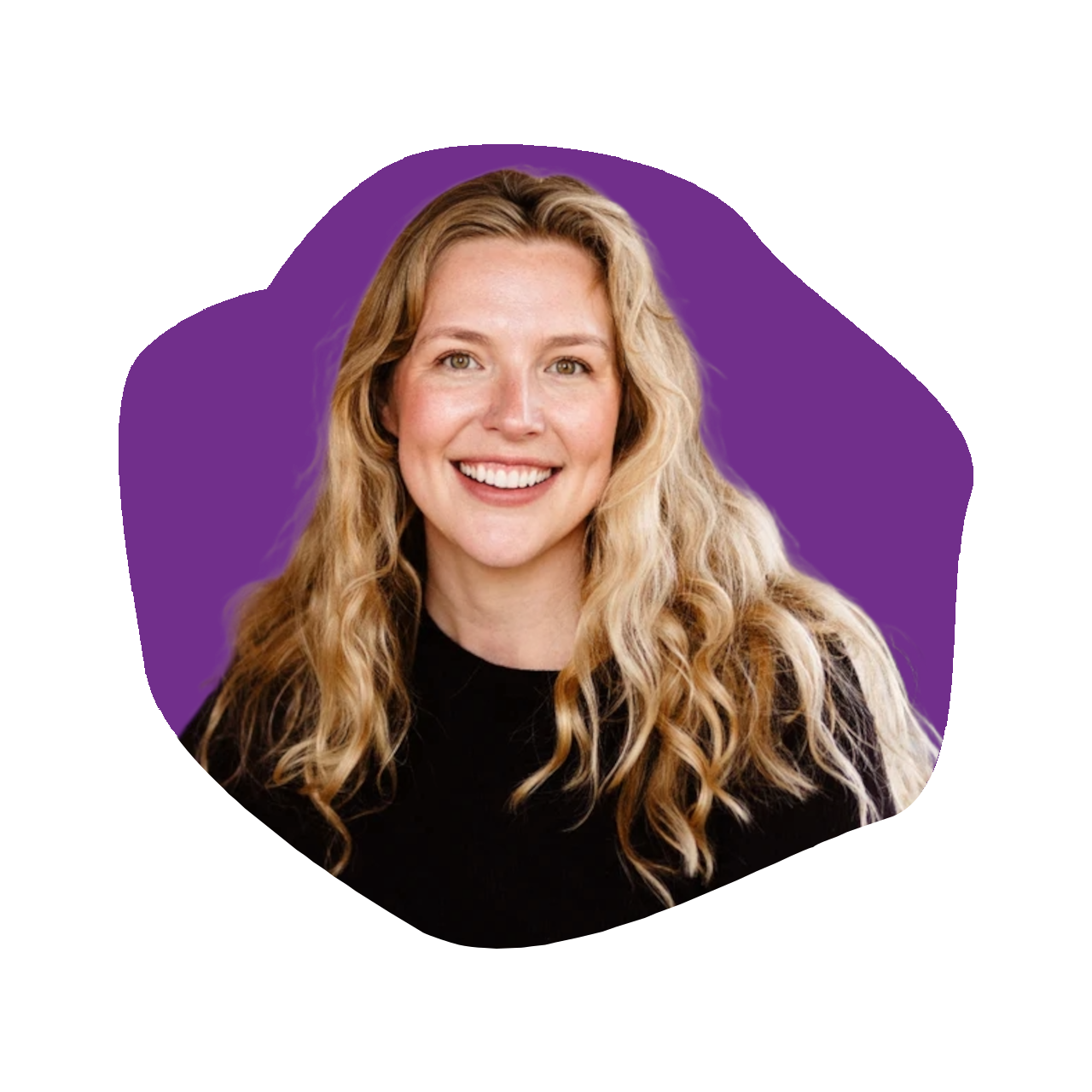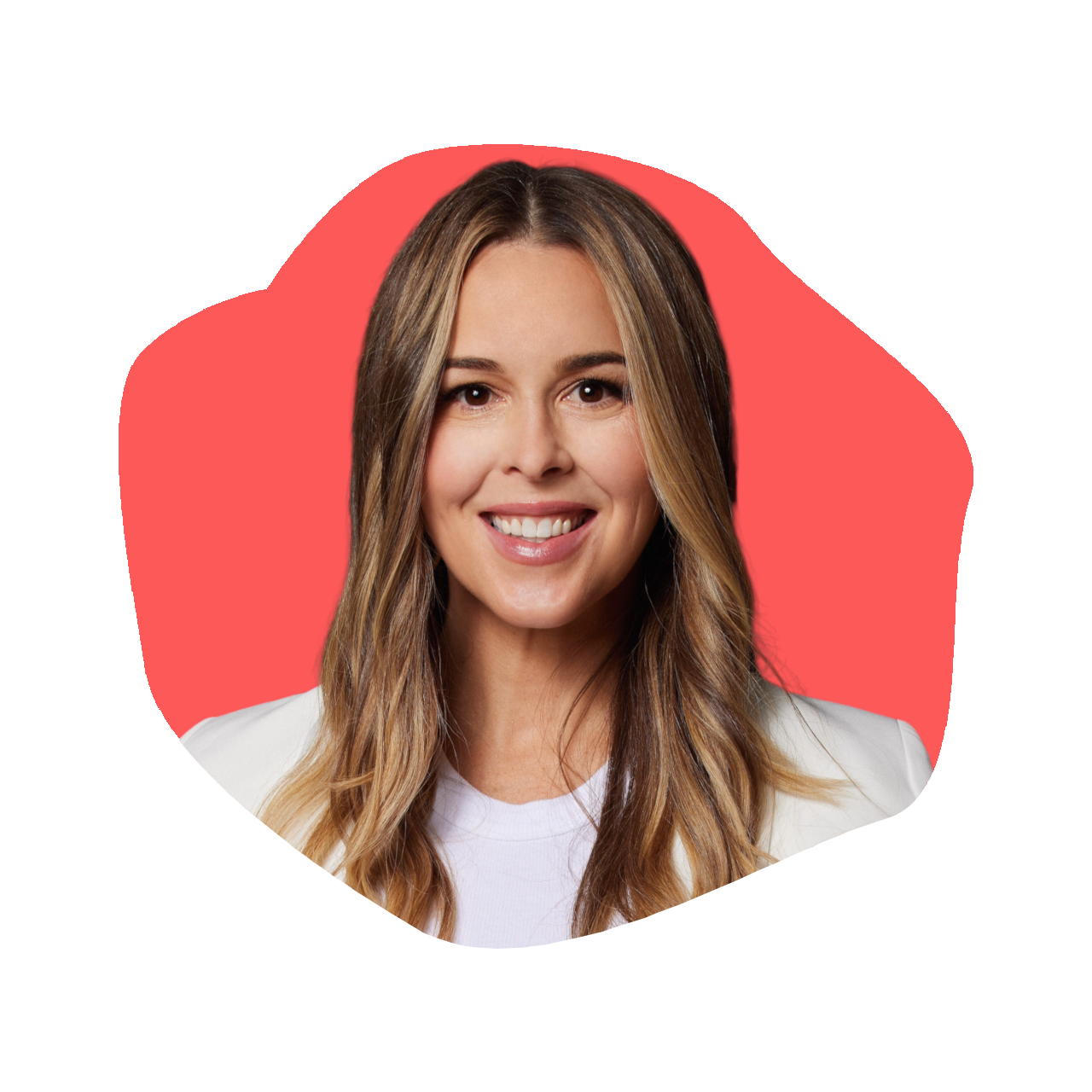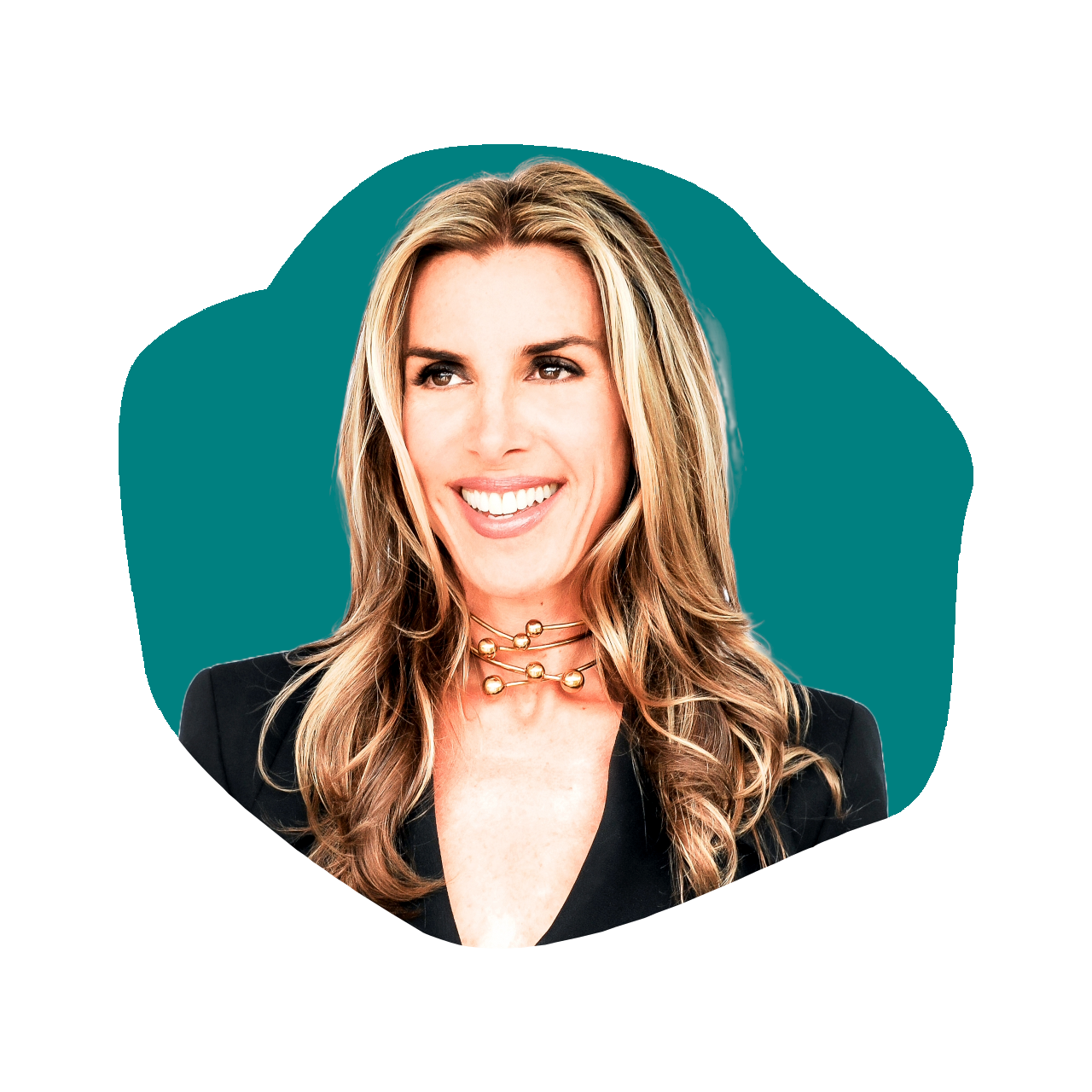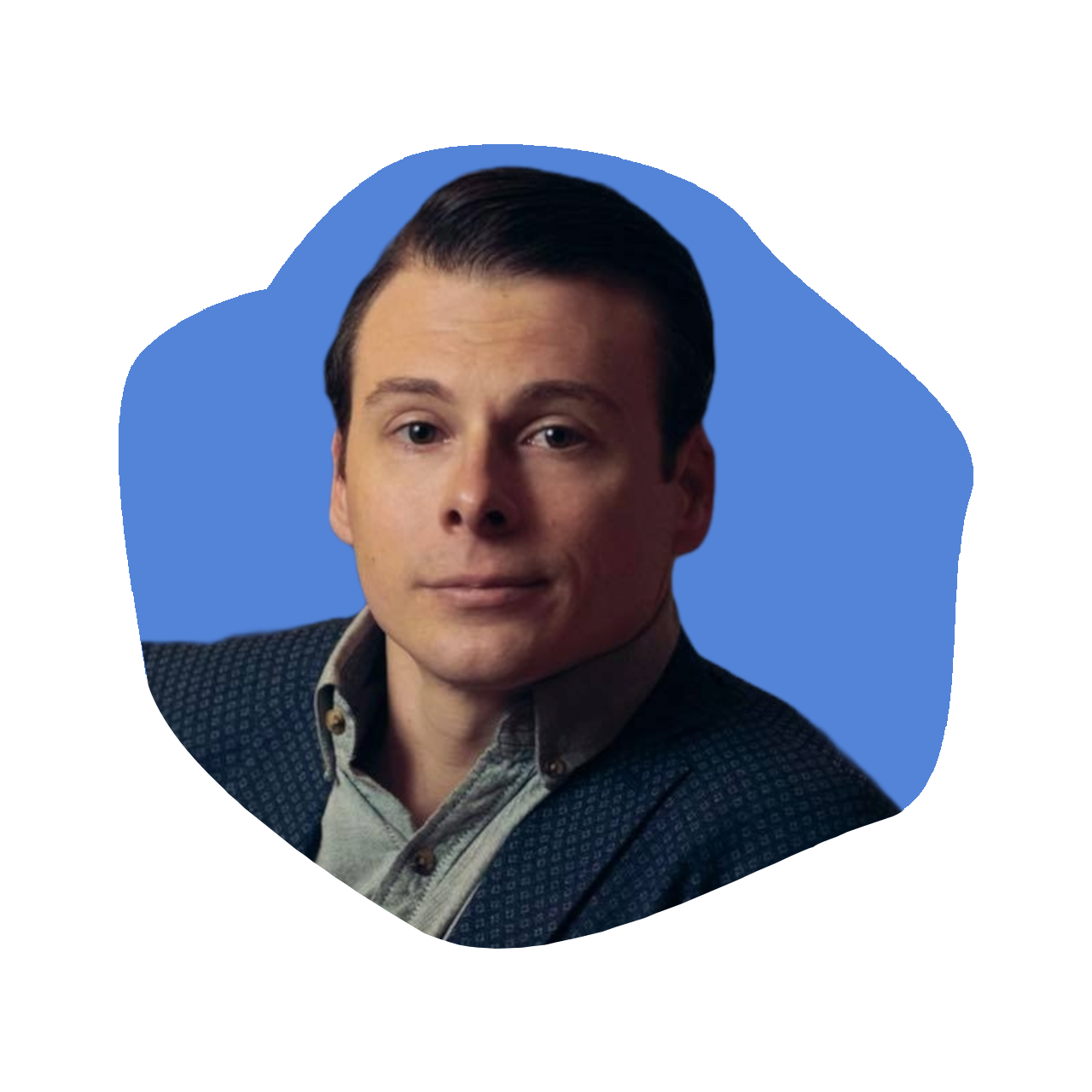Karen Mangia – Customer Success Strategist at Salesforce and Best-Selling Author
Episode 127
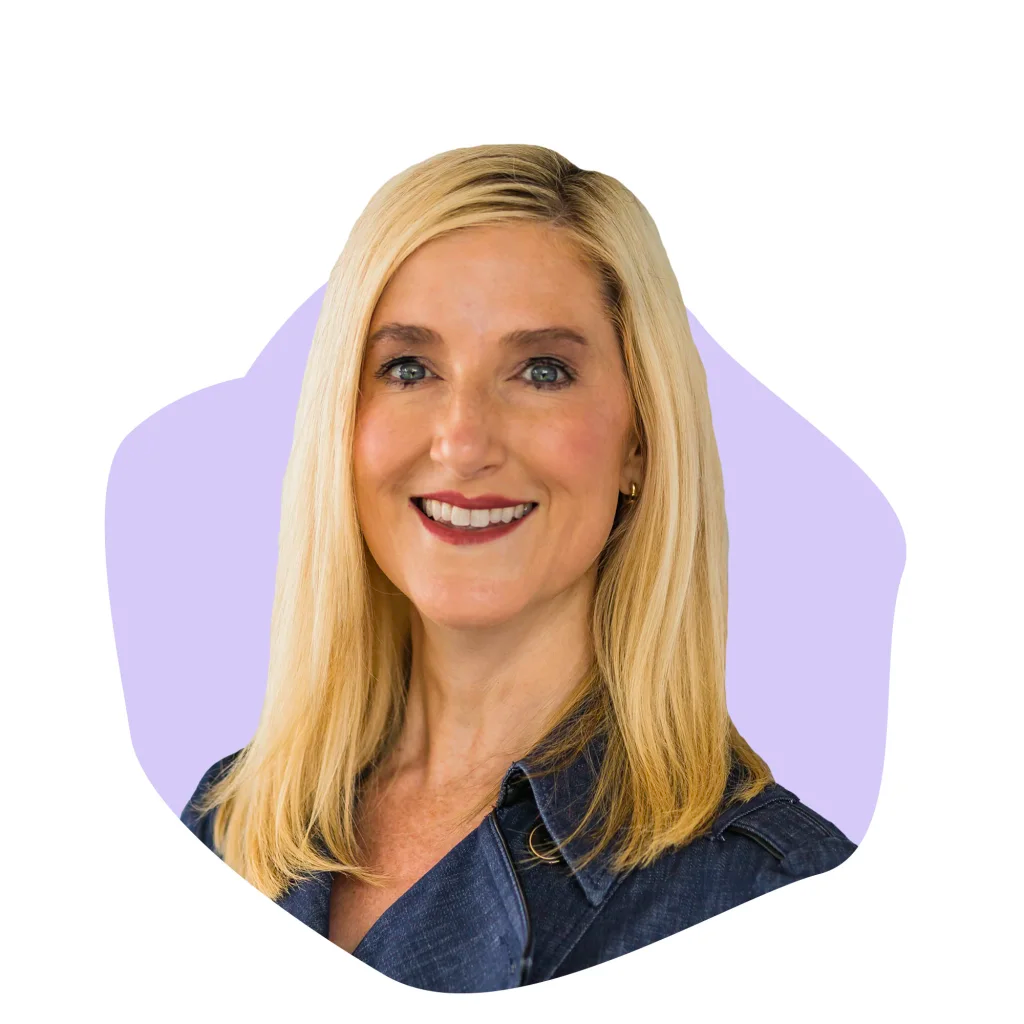
Karen Mangia has spent her career helping people understand what the customer wants. Listen to hear Karen’s best tips on how to understand your customer, how to tap into your entrepreneurial roots, and what inspired her to write new books, Listen Up! How to Tune In to Customers and Turn Down the Noise and Working From Home: Making the New Normal Work for You.
Resources from
this episode:
Social Media:
Enjoying this episode of #TheKaraGoldinShow? Let Kara know by clicking on the link below and sending her a quick shout-out on social!
Follow Kara on IG: https://www.instagram.com/karagoldin/?hl=en
Follow Kara on Linkedin: https://www.linkedin.com/in/karagoldin
Follow Kara on Twitter: https://twitter.com/karagoldin?s=20
Follow Kara on Facebook: https://www.facebook.com/KaraGoldin/
Have a question for Kara about one of our episodes? Reach out to Kara directly at [email protected]
Mentioned in the Episode:
Karen Mangia’s Instagram: https://www.instagram.com/karenmangia/
Karen Mangia’s Twitter: https://twitter.com/karenmangia
Karen Mangia’s Website: https://karenmangia.com/
Transcript
Kara Goldin 00:00
Hi, everyone, it’s Kara Goldin. And I’m here with my next guest, Karen, Mangia on the Kara Goldin Show. And very, very excited to have you here, Karen, and really excited for all of you to listen in on the conversation today. So Karen, in her day job, is the Vice President of customer and market insights at Salesforce. But she recently wrote not one book, but two books and they are so fantastic. And one is called, listen up how to tune in to customers and turn down the noise. And the other one is called working from home. And they’re both excellent, seriously. So definitely think about those that will remind you about it towards the end, but definitely pick up copies of those. So Karen will let Karen tell us a little bit more about why she decided to write not only a couple more books, she wrote another book, and this is her second and third one. So the last book was called success with less success with less. Okay, I knew I had, actually, I have to go back and read that one, honestly. But I’m excited, to do that. So Karen, in her role, and just overall has just been really committed to diversity and inclusion and serves on her company’s racial equality and justice tests for she’s a TEDx speaker. And one of the many things that I share in common, obviously, is that we’re authors but also we both really appreciate customers. And so market and customer insights, as I said, is her deal at Salesforce. I love this quote. I don’t know if you’ll remember this, saying this, Karen. But I believe better questions lead to a mindset shift about how to improve the health of our customer relationships now. And I think that is so perfect to get started with our conversation. So welcome, Karen.
Karen Mangia 02:10
Thanks so much. It’s great to be here. I mean, it was getting lonely in my home office. So it’s nice to have some company even virtually and at a distance it absolutely. So first off, let’s talk about Who are you? Where did you start your hole? Where did Karen begin? And how did you get to Salesforce? Well, my beginnings in my early years, as a child were in northern Indiana and several Midwestern towns. Along the way, I had the opportunity to spend a little bit of time volunteering and learning in Peru, South America, which was a remarkable experience that really shaped a lot about how I saw the world. You know, that was during my college years, and in my professional life, I think about it as kind of three big tech companies for me. So you know, all these mysterious startups you’ve never heard of, you know, at&t, Cisco, and Salesforce. And, you know, it’s so funny, when I think about my career. what really got me excited when I was in university, was working for a professor, and helping him send out a survey over a year, interestingly enough, and it was two radio and television news directors. And we were looking for trends. And I learned a lot from him about asking questions, doing these live interviews, I now know that as qualitative research, and then looking for themes that we would write these articles about what we were discovering, and at the time, I thought, wouldn’t it be so fantastic to work for Nielsen ratings, right, the company that did all that kind of research. And unfortunately, I hadn’t done my homework, because I failed to look up the fact that that was headquartered in Iowa. And that didn’t sound like a great place to live to me. And what was so interesting was, kind of put that on the side. And ultimately, if I look at my career with customers, and doing customer experience work, the core of that is about that first job that I had for that Professor that I loved, which is asking great questions, listening deeply for the answers, and looking for those hidden themes. It’s so interesting, my first job out of college, I should say, Now, my very first job was working. I wanted to work in journalism, and I went to work for Fortune but didn’t get a job there. But then I got a job in the building at the time and the role was an executive assistant in this thing called circulation. I had no idea what circulation was, but I was just excited to work for, you know, this premier magazine. And what I learned at a time in circulation has sat with me and helped me for years because circulation is at a sort of short level. It’s the blowing in
Kara Goldin 05:00
Insert cards that fall out of magazines that are so annoying. But the analysis that I got to hear early on and become involved in around what to what do consumers respond to on pricing, and what words and what colors and all of this stuff and I now, you know, over 50% of our business at the hint, is direct to consumer. And so there’s while I don’t run that team, on a day to day basis, there are so many of these things that I look at and, and think about, you know, that first job, it’s so and what I really loved about it, and what I was learning about the consumer. So I totally, have another thing in common with you about that. So, you had that role? And then, and then what next?
Karen Mangia 05:52
Yeah, so I started my career in project management at at&t. And, you know, my thought process at the time is, Won’t this be great to work for a big brand unknown brand that people have heard of. And my thought at the time was, it’s a great opportunity to probably have a variety of jobs without moving to a different company, I get to see this is a place where I could build a career. And it was fascinating because my move from project management to sales is absolutely utterly unglamorous. I’ll never forget the time when my boss called me into his office at the end of the day, and I had that feeling in the pit of my stomach, like when you were in school, and you get called to the principal’s office, I was like, I’m either in trouble, or I’m getting fired. So I sit down in his office, it’s like five o’clock, he walks in nonchalantly carrying this mug of hot tea glasses, kind of perched on the end of his nose, and he sits down and looks at me and says, So Don’s retiring. And I was thinking the two things the listeners are probably thinking right now, which is who was done and why do I care? And what he said to me was Don’s retiring, and we want you to take over his accounts, he was a salesperson, until we can hire someone. And he said you’ll be taking over the star module. I didn’t hear anything. He said after that because what came through to me is, you’re gonna be a star.
Kara Goldin 07:18
Well, yeah, of course. Big job.
Karen Mangia 07:20
Yes, of course, doesn’t sound fantastic. And as I called the 100, customers that were on the list, one agreed to see me, one customer, out of 100. And I prepared as you read about, I mean, it was a textbook preparation for a sales call, good suit the whole deal. It’s about the time when I roll up into this abandoned-looking office park, and I walk inside and see this dilapidated office furniture that it kind of hit me I think star must have stood for like small, troubled, and risky, right? No one else wanted these customers.
Kara Goldin 07:56
Right, right.
Karen Mangia 07:57
So I go into the conference room, I sit down, I’m wearing my interview suit. It’s the only one I own. And I pull out this middle of the folder and I hand out these proposals I’ve prepared. And then I proceeded to read the proposal to the customer meet every single word. And I won the deal. And I marvel at the hip now. And what I’ve come to understand, and this is, you know, a theme I talk about in Listen up is I truly had a beginner’s mind. I mean, I had never done a sales call before, I’ve never called on the customer. So I asked them questions. And I truly heard and internalize what they were saying because it was the first time I was hearing it. And it took later into my career and you know, losing some deals and leading big sales teams, to discover truly what a gift it is to ask a question and pretend as you’ve never heard the answer before. So you can hear what the customers truly saying.
Kara Goldin 08:52
So interesting. So then how, like, how did you get to Salesforce?
Karen Mangia 08:57
I got to Salesforce because I had been writing a blog, we were talking about our shared interest in blogging. And so the customer experience blog I was writing at the time when I was leading voice of the customer and customer experience globally at Cisco, you know, created some visibility opportunities. And at the time, Salesforce was thinking about how to add some new dimensions to the way they were connecting with customers. I mean, of course, the company was growing incredibly quickly. At that time, the nature of who the customer base was, was changing very quickly and starting to divide a little bit between, you know, people who use the product from people who developed, you know, using the product or developed features around the product from people who were the influencers and decision-makers tied to Are we going to spend money with the company. And so I started by just having some conversations, I mean, Cisco and Salesforce are customers of one another. And it just started in that vein, Hey, could you share some ideas, we read your blog, and that ultimately created an opportunity for me to come to Salesforce To get to build some of those programs and ideas that we talked about, which was a really fun journey,
Kara Goldin 10:06
that’s awesome. And what was the most surprising insight that you’ve ever seen from a customer?
Karen Mangia 10:14
What’s most surprising to me, is when customers will highlight something to us that sounds so simple and so obvious, and it’s something that we’re not doing. And, you know, that can play out in a range of ways. I mean, one that comes to mind is, you know, very simple aspects of how we integrate what we’re doing, you know, into our customer’s workflows, or even just some of the use cases that our customers have highlighted to us through the years, you know, we’re thinking about something very complicated. And really, sometimes the needs that we’re solving are something that is very simple but is easily overlooked. And what I like about this opportunity to connect with customers and hear about their vision for the future, or their challenges or how they’re trying to disrupt is sometimes within that, you know, you’ll hear just a signal of opportunity, do you think, Wow, how did we, how did we not think of that?
Kara Goldin 11:13
Yeah. And,
Karen Mangia 11:14
and what I love is when we have those conversations before we bring something to market, and so when we do, it’s really baked in an outside-in view of a customer really having a need or multiple customers, and we’re really doing something to solve it.
Kara Goldin 11:27
I think that’s so true. I always talk about entrepreneurs, and you know, versus these large companies, because I think so often, they’re living in this world where they can’t actually hear what is going on with the consumer, and they don’t have consumer insights groups, or they don’t ask the customer, right. And I think that it’s, that’s not to say that your business should be totally dictated on what your customers tell you to do. So if I asked my customers, for example, about the hint, I would find a few customers that would tell me to do turkey water, or right, I mean, and Brad’s gonna do turkey water. That’s one I’m pretty sure so, but I do feel like actually understanding the problem. And that’s often what you’re talking about people who don’t really know what they’re saying in terms of they’re, they’re really highlighting problems that they’re seeing, and especially if you are a solutions-based company, then or product that that’s super, super key. So I think that’s totally agreed. So, you came out with two books this year, why two books, first of all, very different books. But I mean, why to?
Karen Mangia 12:45
Well, the way that journeys started is hearing our CEO talking about, you know, at the time when the pandemic was just starting, I mean, if you think back to that time of incredible uncertainty, he encouraged us to tap into our entrepreneurial roots. And he said, think like an entrepreneur, what would you start right now think like an entrepreneur, what would you start? And so I contracted with my publisher, Wiley to write this book, listen up. And I thought, okay, I’m watching our company, you know, bring entire products to market that weren’t even on the roadmap at the beginning of the year and doing so quickly. And if they can do that, I mean, I’m sure I can go write this book about connecting customers, it will be timely in times of disruption or uncertainty. Most organizations think about connecting with their customers, you know, keeping the ones you have, and potentially getting some new ones, you know, if the opportunity presents itself, and so I thought this will be relevant, timely, actionable. And I’ll never forget turning in that manuscript on May 1, and thinking, wow, this is such an accomplishment, right? So listen up is scheduled to come out at the end of October, about a week and a half later, I’m having a conversation with my, my editorial team publishing team at Wiley. And we started talking about working from home and I shared I was on our company’s Task Force. And I had been writing a blog about the topic, and it was getting a lot of reaction. And I’ll never forget that my editor, she said, working from home, do you think you could write a book about that? And I laughed hysterically and I set up in my sleep? Yeah, you’re
Kara Goldin 14:19
just trying to get your other book launched, but
Karen Mangia 14:23
never anticipated her follow-up question, which was, Do you think you could do it in two weeks? I was like, no. And she said, How about 30 days?
Kara Goldin 14:32
Oh, my gosh,
Karen Mangia 14:34
yeah, yeah. 30 days. And I responded with the two words now that I realized, can help all of us kind of see and do the impossible, and they were, why not? Yeah. And I’m so glad I suggest. So what really happened was I ended up writing that working from a home manuscript in 30 days. And it came out just 60 days after that. So I mean, the conversation to holding that book in my hand was less than 90 days. And, you know, I think about that power of, of why not? You know of things that we can all say yes to right now and try that in another context might just seem outlandish. And right now there’s an opportunity.
Kara Goldin 15:14
I totally agree. So one of the things that you talk about in the book is engaging and some in dialogue with a customer. Sounds great. But how many people? like where do you start? And what do you think are kind of the first things that you should think about that you should ask? I mean, just take me through that.
Karen Mangia 15:36
What I think about right now, and the time that we’re in is we’re needing to connect with customers in a way, that’s exactly the opposite of how most of us were taught me when, when I got past that initial super lucky sales call, where I went and got some actual sales training where they teach you, you shouldn’t read a proposal to a customer. You know, I think what we’re taught so often is, you know, ask them questions, have a conversation, and then you’re going to show up with that customer. And you’re going to have this wonderful presentation where you, you know, restate the customer’s objective or the business problem they’re trying to solve. And you’re going to outline how your solution is a fit, and maybe you’re gonna throw in some ROI, and then always conclude with the next steps, action, alignment, whatever that looks like, Mm-hmm. And right now I’m finding what we really have to do is unfinished our slides, we need to show up with really thoughtful questions, and co-create the path forward with our customers in a way that shows up as engaging and collaborative across video technology.
Kara Goldin 16:38
So don’t have all the answers
Karen Mangia 16:40
don’t have all the answers, which is, I think, exactly the opposite of what we’ve been taught and what we think being an expert or a partner looks like to a customer. And right now, I think there are lots of unanswered questions. And what customers really want is, let’s talk about those together. You know, what, what information could you share? What paths could we pursue? What could pilots look like, creating that together? You know, it helps your solution be a little bit more sticky. But it also means you got to prepare for that meeting in a very different way. I mean, you need to orchestrate interaction, discovery, you know, those meetings can’t be four hours long, breaking it into smaller pieces. And so it’s showing up with better questions, and not with all the answers.
Kara Goldin 17:28
Yeah, I think so often to depending on not just for, you know, whether your customer is an individual, or, you know, a company, you know, b2c or b2b, I think it’s, it is not in your best interest to show up with all the answers and just sort of taking somebody through a deck to because you may not know what their pain points are, or you may not even understand their business, right. And I think that when you come up and you’re thinking all about you, right, and how you can put on your best show, but I think without actually really understanding. And maybe you do that ahead of time even and trying to come up with some solution. I’ve seen that done successfully. But I think that that’s such an important thing. Otherwise, so many times people just feel like you’re just wasting their time, and they sort of form this opinion. Maybe not rightfully so but kind of that presentation. So Well, I think this book is it really gives you kind of best practices. And again, it’s called Listen up. And then let’s go to the other book here. Feel like I’m Mr. Rogers or something. Right. So working from the heart again, I know exactly. Where’s my red card, working from home? And so talk to me about that. Obviously, it’s a hot topic right now, as most of us are working from home. And we don’t know how much longer we’ll be working from home for many of us are some of us are running companies from home. So what is the kind of the big thing? What is the takeaway from that?
Karen Mangia 19:05
The takeaway is now what? And the reason I said, I mean, you hit on that so beautifully a moment ago. You know, the first phase when we all went to work from home was adrenaline. Mm-hmm. You know, we were full of adrenaline from battling this mysterious, unknown illness, willing to do whatever it takes right to take care of our customers, ourselves, our health. And on the other side of adrenaline was the honeymoon is over. I mean, you can work 20 hours a day, you can wake up in your pajamas, work from your bed all day long, go to sleep and do it again. But how long? Should you really go without a shower? And then that gave way to how long is this going to last? Did you say that a moment ago? Mm-hmm. And what I hear within that is the question people are really asking is, how do I live and work sustainably, especially now that this is becoming more permanent than I might have thought? And, you know, what I encourage people to do is just either individually or as a team or an organization. Just take a brief pause and ask yourself a couple of very simple questions. You know, the first is, what’s working? You know, we all implemented some strategies, you know, by happenstance or on purpose, that are playing out well, that is working, what’s working?
20:26
Next,
Karen Mangia 20:26
what is not working? And then the last one for me is, you know, what is the smallest task or thing or strategy that we can permit ourselves to adjust?
20:37
You
Karen Mangia 20:39
know, and for some people, it’s finally realizing that that antique dining room chair is not comfortable, you have back problems, and you shouldn’t have to sit there anymore. Yeah. Sometimes at an organizational level, it’s, if we are going to have this for a more extended period of time. How do we need to re-skill and retrain because people need to have discovery conversations or difficult conversations or performance review conversations for the first time virtually? You know, how do we think about making some purposeful investments? Because this is taking a little longer than we might have thought?
Kara Goldin 21:15
I think that’s, that’s super important. So do you think about and advise your own team to sort of getting into a schedule or pattern? Or what do you think are some of the quick things, quick pieces of advice that you see really working for people living in this world
Karen Mangia 21:34
routines, rituals, and boundaries, you know, you might not have loved your commute in the past, when you went into a physical location, or if you got up in the middle of the night regularly to go catch planes or whatever that looked like for you. The reality is, you had a routine that signals to your brain into your body, we’re getting ready to do work now. And that’s a specific model, and another catalyst, whether that’s beating the traffic, picking your kids up from daycare, or meeting up for a happy hour, that was your boundary that sent you into a ritual to end your day and transition out of that. And we and we’ve lost that. And so I encourage people to be thoughtful about what is the five to 10-minute maximum, go to work and leave work ritual that you can put in place for yourself. And in fact, this week, there was an article in the Wall Street Journal, both in print and in their digital format, about the rise of the fake commute, about the number of people now that are saying, you know, I think I do need to set my alarm clock, get up, take a shower, and then go outside and walk around the block, come back in, make my coffee or tea and then go to a specific place.
Kara Goldin 22:44
Yeah, I think that’s so true. Yeah,
Karen Mangia 22:46
I’ve had others share with me, Hey, you know, what I do know is I get up in the morning, and I packed my briefcase just like I did before, you know, I put my water bottle in there and put my snacks, then I’m dressed for work, I take my briefcase to space where I do my work, I unpack it, I do work. And at the end of the day, I shut it all down, pack it up, leave them and I stick that in my closet or a drawer. So I’ve now left work, we need these simple rituals to help us change the channel to have some time where we’re off, and also when we’re ready to be at work to get ourselves in that zone.
Kara Goldin 23:18
Yeah, I think that’s so true. You know, it’s interesting, I’ve been, I go into, or I used to go into my office in San Francisco, but I travel a lot. And so I found that I was already kind of in that pattern that you’re talking about that I always said to people when I was traveling, that I would pay attention to the existing time, and I would set my alarm. And I would not pay attention. You know, if I was tired, I would obviously, you know, figure out how to catch up on that. But more than anything, I think getting into that ritual, paying attention to what time it is. And then also getting, I have to get my exercise in first thing in the morning. Because otherwise just gets away from me. And you know, stuff comes up every day that I didn’t know I was doing yesterday. And so I think that really allowing yourself to kind of get outside and get that experience or you know, whatever it is, however you do that, I think is so important just to kind of set your mind in the right direction. And then, you know, also I feel I feel like technology to upgrading your technology because technology, not working is really stressful, right? And figuring out how to get you to know it better because I think I was even I had I have four kids who were all doing school. And so my bandwidth in my house was just crazy. I mean, it was insane. And so it took me a little while to get it all together. But I think that’s another thing like, elite try and figure out what the problems are just like with your customers and alleviate that stress. So I think that’s super, super important. What do you think happens after people start to go back to the office? Do we go back to, you know, normal, like, do people? Does this whole virtual environment the way? I mean, what, what happens? What do you think?
Karen Mangia 25:17
Well, I believe we all have become authors in the past six months or so. And we’ve written a fairy tale together, and it goes something like this. Once upon a time, I worked in a magical place where I was highly productive, and my life was balanced, it was called the office. And there you see, everything was wonderful, my dreams came true. And I was under much less stress because I could connect with my boss and my team and have these firm boundaries between my work and my life. And this delta is a powerful pole, right? So I think initially, people will want very much the moment they can to return to that magical, wonderful, dreamlike place called the office, right, we’ve longed for it to some degree, I think what we’ll discover is, you know, a collection of people in an office who can’t really be together, because there will still be some restrictions, you know, that that the office without camaraderie is kind of a collection of desks, and it’s just zoomed calls in a different location, right?
Kara Goldin 26:15
Mm-hmm.
Karen Mangia 26:15
And so, you know, what employers are asking for really over the longer horizon is the autonomy to choose where they need to be to do their work and show up in their best interests. Sometimes that might be in an office and a conference room, or with a customer in person, sometimes that might be at home, but it’s all about, you know, flexibility and choice. And I think within that, you know, it really, really gets to this underlying kind of push and pull about trust, you know, people want to be trusted to be able to decide where they need to be at any given time to get their work done and be able to set themselves up well, to do that.
Kara Goldin 26:51
It’s interesting. I was interviewing the CEO of very desks. It’s now the company, I guess, they changed the name. It’s just very, but it was interesting because he was talking about space planning. And, you know, obviously, there’s a lot of that going on. But something that you just said, combined with what he had said to me, was that the biggest challenge is these conference rooms. Right? That what happens to them? Because you, you know, it’s very difficult for most people to have enough space and, you know, to have people sit whatever, six feet apart, and then you know, what exactly is happening in an enclosed room with the doors down. But I just think that I think so much of what we’ve learned over the last year, and what we’ve gotten comfortable with around whether it’s zoom or other platforms is that could be the meetings right for a while. And I and maybe you do that from your desk, right? If you do need to get together with people versus actually being able to safely distance and I don’t know, I think at least for the next year, I think there’s a lot of people that are kind of trying to figure that stuff out. But I think it’s it’s a possibility, and maybe a solution to sort of the problem that I think a lot of people are facing. But anyway, well, this is amazing. And everybody definitely goes out and buys these books by Karen, they are so good. And I really, really think you will enjoy them. And there’s a lot of thoughts, whether you’re, you’re in it just working from home, or you’re trying to manage a team from there. I think there are just so many solid thoughts and in your book, it’s really, really great. So thank you, Karen. And if you like this episode, like it and give it all five stars and all the reviews, and we’re here every Monday and Wednesday with lots of great founders, CEOs, and authors that are giving tons of topical information, and have a great week. Thanks so much.





